DIY culture
description: a subculture that encourages individuals to create or repair things without direct assistance of experts
12 results
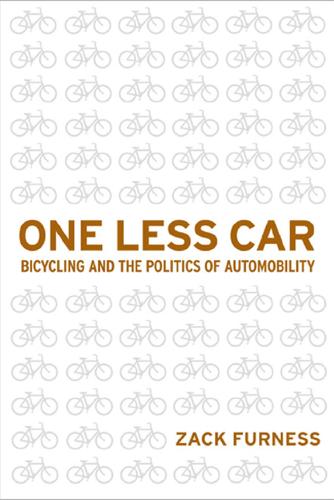
One Less Car: Bicycling and the Politics of Automobility
by
Zack Furness
and
Zachary Mooradian Furness
Published 28 Mar 2010
Gee vaucher, as performed by Crass, “Big Man, Big M.a.n.,” Stations of the Crass (Crass records, 1979), lp. also see/hear Crass, “Deadhead,” Christ the Album (Crass records, 1982), lp. amebix, “largactyl,” Arise! (alternative Tentacles, 1985), lp. in addition to the relevant essays featured in DiY Culture and The Unknown City, see Derek Wall, Earth First! and the Anti-roads Movement (london: routledge, 1999). George McKay, “Diy Culture: notes towards an intro,” in DiY Culture, 4 (emphasis is original); iris Marion young, Justice and the Politics of Difference (princeton, nJ: princeton University press, 1990), 86. as a case in point, former Crass member penny rimbaud—who is not one to shy away from self-criticism or a scathing critique of punk—specifically alludes to the role that Crass played in the rejuvenating the Campaign for nuclear Disarmament in the late 1970s, namely, by introducing antinuclear politics to “thousands of people who would later become the backbone of its revival.”
…
“The Claremont road Situation.” in The Unknown City: Contesting Architecture and Social Space, edited by iain Borden, Joe Kerr, Jane rendell, and alicia pivaro, 228–45. Cambridge, Ma: MiT press, 2001. McGurn, James. On Your Bicycle: An Illustrated History of Cycling. new york: Facts on File publications, 1987. McKay, George. DiY Culture: Party and Protest in Nineties Britain. london: verso, 1998. ———. “Diy Culture: notes towards an intro.” in DiY Culture: Party and Protest in Nineties Britain, edited by George McKay, 1–53. london: verso, 1998. ———. Senseless Acts of Beauty: Cultures of Resistance since the Sixties. london: verso, 1996. McKee, Oliver. “The Horse or the Motor.” Lippincott’s Monthly Magazine (1896): 379–385.
…
Mankind: An Analysis of Tyranny, a Proposal for Rebellion, a Plan for Reconstruction (new york: norton, 1971); George McKay, Senseless Acts of Beauty: Cultures of Resistance since the Sixties (london: verso, 1996), 127–158; aufheben, “The politics of anti-road Struggle and the Struggles of anti-road politics: The Case of the no M11 link road Campaign,” in DiY Culture: Party and Protest in Nineties Britain, ed. George McKay (new york: verso, 1998), 100–128; John Jordan, “The art of necessity: The Subversive imagination of anti-road protest and reclaim the Streets,” in DiY Culture: Party and Protest in Nineties Britain, 129–151; peter north, “‘Save Our Solsbury!’: The anatomy of an anti-roads protest,” Environmental Politics 7, no. 3 (1998): 1–25; Sandy McCreery, “The Claremont road Situation,” in The Unknown City: Contesting Architecture and Social Space, ed. iain Borden et al.

Makers
by
Chris Anderson
Published 1 Oct 2012
Variability, which could be an obstacle in a traditional mechanical environment … has been turned into an asset in the new digital environment—indeed, into one of its most profitable assets.” Information inside But surely custom-made or bespoke suits and farmers’ markets have been around forever. What’s different now? The simple answer is that DIY culture has suddenly met Web culture. And the intersection of the two lies in digital design: physical products that are created first onscreen. Walk into an Apple Store and look around you. All those shiny objects—all those beautifully designed and manufactured slabs of titanium, high-end plastics, and circuitry—started life on a screen somewhere.
…
Scaled engineers win the respect of their peers with their homebrew builds; constructing and flying a machine of your own design counts for more than any academic degree in winning the trust and confidence of your peers. Each of the rented hangars holds not just an avocation, but also a résumé-builder, a laboratory for new ideas and a test bed for new techniques. Maintaining the link to the garage is how Scaled Composites stays ahead. The DIY culture of Scaled Composites comes from Rutan himself. Born in 1943, his teenage years were full of self-designed model airplanes and competition victories. He figured out how to get a model plane to do a “power stall”—essentially hovering in midair by hanging on its propeller while he remotely controlled the throttle to keep it there.

Fully Automated Luxury Communism
by
Aaron Bastani
Published 10 Jun 2019
Having presumed agency approval was a mere formality, Ishee was surprised when he received no response. On January 18 it became clear why, as the FDA released a proposal to regulate cattle, pigs, dogs and other animals modified with gene-editing tools, including CRISPR-Cas9. A previously ambiguous area at the interface of DIY culture and high-value technology would now require federal approval and be subject to significant government oversight. That came as a blow to Ishee, who told one outlet that it would be ‘easier to teach dog breeders CRISPR than … why pure breeding is a bad thing’. His view was that the genetic material of pedigree dogs is in no way ‘natural’ to begin with, and that CRISPR offered a means of correcting biological errors which were the result of human intervention.
…
In a society emphasising energy abundance through efficiency as much as extreme supply, the idea that 127 calories of fuel would be used to fly a calorie of iceberg lettuce from the US to the UK, as is presently the case, will be rightly viewed as absurd. Indeed, just like gene editing it’s possible that DIY cultures will accompany the rise of hyper-local production with our ever-expanding leisure time given over to home-brewing rib-eye steaks and Gruyère cheese as much as beer or cider. III. Paradise Found Invention, it must be humbly admitted, does not consist in creating out of void, but out of chaos.
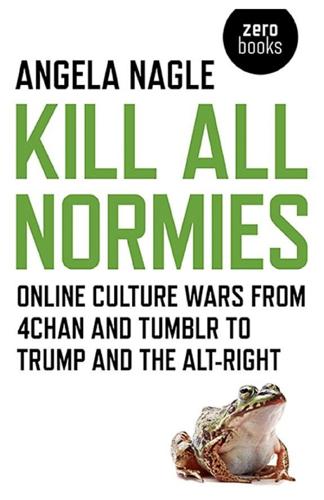
Kill All Normies: Online Culture Wars From 4Chan and Tumblr to Trump and the Alt-Right
by
Angela Nagle
Published 6 Jun 2017
The triumph of the Trumpians was also a win in the war against this mainstream media, which is now held in contempt by many average voters and the weird ironyladen Internet subcultures from right and left, who equally set themselves apart from this hated mainstream. It is a career disaster now to signal your left-behind cluelessness as a basic bitch, a normie or a member of the corrupt media mainstream in any way. Instead, we see online the emergence of a new kind of anti-establishment sensibility expressing itself in the kind of DIY culture of memes and user-generated content that cyberutopian true believers have evangelized about for many years but had not imagined taking on this particular political form. Compare the first election won by Obama, in which social media devotees reproduced the iconic but official blue-and-red stylized stencil portrait of the new president with HOPE printed across the bottom, a portrait created by artist Shepard Fairey and approved by the official Obama campaign, to the bursting forth of irreverent mainstream-baffling meme culture during the last race, in which the Bernie’s Dank Meme Stash Facebook page and The Donald subreddit defined the tone of the race for a young and newly politicized generation, with the mainstream media desperately trying to catch up with a subcultural in-joke style to suit two emergent anti-establishment waves of the right and left.
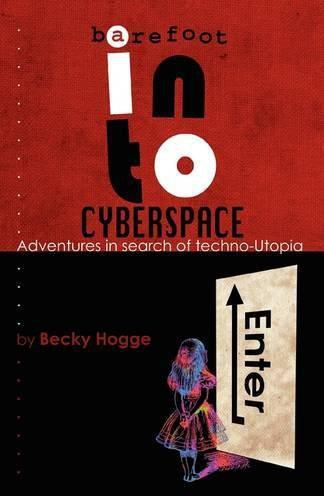
Barefoot Into Cyberspace: Adventures in Search of Techno-Utopia
by
Becky Hogge
,
Damien Morris
and
Christopher Scally
Published 26 Jul 2011
I didn’t do it consciously but one day I opened up that thing and I went: ‘Oh my God, these are BoingBoing’s layouts. Totally.” BoingBoing.net’s original tagline is “A Directory of Wonderful Things”. A directory is like a catalogue. And the items and ideas BoingBoing.net lists have the same contrasting qualities of DIY culture, progressive politics, and high tech – instructions on how to build your own robot rub up against reports on bloggers arrested in repressive states and the latest news from nanotech research. But there is one thing that BoingBoing.net brings that has nothing to do with Whole Earth, and that is a strong sense of kitsch, that post-modern tonic used liberally by the children of baby boomers to get them through the day.

The Zero Marginal Cost Society: The Internet of Things, the Collaborative Commons, and the Eclipse of Capitalism
by
Jeremy Rifkin
Published 31 Mar 2014
But underneath the surface, an even more radical agenda is beginning to unfold, albeit undeveloped and still largely unconscious. If we were to put all the disparate pieces of the 3D printing culture together, what we begin to see is a powerful new narrative arising that could change the way civilization is organized in the twenty-first century. Think about it. The DIY culture is growing around the world, empowered by the idea of using bits to arrange atoms. Like the early software hackers of a generation ago, who were motivated to create their own software to share new information, DIY players are passionate about creating their own software to print and share things.
…
M., 34 Center for Strategic and International Studies (CSIS), 292 Cha, Ariana Eunjung, 169 Chakrabarty, Ananda, 165 Chandler, Alfred, 44, 46 Chronicle of Higher Education (Carey), 118–119 Church, George, 86 Cisco, 14–15, 73, 149 clean IT. see Cleanweb Movement Cleanweb Movement, 145–147, 172 Clemens, Eric, 250–251 climate change, 286–291 Clinton, President Bill, 7, 164, 188 Coase, Ronald, 137, 150–151, 207–208, 211 collaborative age, 76–77, 86, 107–110, 131, 151, 217, 230, 302, 311 classrooms. see massive open online courses (MOOCs) consumption, 234–238, 253, 282 etymology of, 18–19 freedom, 226 rise in collaborative innovation, 21 Collaborative Commons, 153–222 collaboratists prepare for battle, 173–192 and comedy of the commons, 155–172 and the communications commons, 195–205 and the cooperatives’ renaissance, 211–217 definition of, 16 and healthcare. see healthcare historical background of, 16–17 importance of, 17–18 and logistics commons, 217–221 and managing temporal resources, 221–222 the medium is the domain, 177–181 and a new commons narrative, 181–187 and the new deal’s greatest success, 206–211 and protests to reclaim the public, 187–188 rise of the, 16–25 as a self-managing economic enterprise, 16 shift from exchange value to sharable value, 19–20 and the struggle to define and control the intelligent infrastructure, 193–222 as technological soul mate of the IoT, 18 see also the comedy of the commons; social capital and the sharing economy the comedy of the commons, 155–172 design principles of effective commons, 161–162 rediscovering, 156–165 and Törbel Commons covenant agreement of 1483, 160–161 see also Hardin, Garrett; Rose, Carol “Commons affliction,” 187 Community supported agriculture (CSA), 239–240 computer-aided design (CAD), 124 computer(s), cost(s) of, 80 concentration patterns, 54–55 conservation easement(s), 186 consumer(s) and access over ownership, 20 society, 22, 208, 233, 247, 299 contour crafting, 96 contradiction between intellectual-property rights and open-source access, 100–101 copyright(s), 175, 178–181, 188 and “copyleft,” 175, 179, 253 see also patent(s) Couchsurfing, 235, 237, 258 Coursera, 115–118 currencies, alternative, 259–262 Craigslist, 249 Crane, David, 83 Creative Common licenses, 94, 179–180, 186 crowdfunding, 19, 146, 256–257, 269 crowdsourcing approach to research, 116, 242–243 cyber attacks/cyberterrorism, 286, 291–296 cyber thieves, 76 Darwin, Charles, 63–64, 183 data security and privacy, associated with IoT,14 Defense Advanced Research Projects Agency (DARPA), 125 Dell, Adam, 239 DeLong, J. Bradford, 7–9 De Kestelier, Xavier, 97 Demetri, Dr. George, 242 The Descent of Man (Darwin), 63 Deutsche Telekom, 54, 101, 198 Dini, Erico, 97 DIY culture, 90, 94–95, 99–100 Dobb, Maurice, 40 Doctorow, Cory, 95 dominance of social media, 201 see also Facebook; Friendster; Myspace; Twitter driverless vehicle(s), 126, 230–231 Drucker, Peter, 264 Duffy, John, 137 eBay becoming an online monopoly, 201–205 cuts out the middlemen, 232 and free currency, 262 as a profit-seeking enterprise, 252 ecological footprint, 107, 274–276, 284, 286, 302 Econofly, 145 economic need for greener/cleaner energy, 10 “Economic Policy for the Information Economy” (Summers and DeLong), 7–9 “Economic Possibilities for Our Grandchildren” (Keynes), 6–7 The Economist, 5, 77–78, 121–122, 251, 259, 265 economy of abundance, 297–303 and a biosphere lifestyle, 297–303 circular, idea of a, 236–237 and the sustainable cornucopia, 273–296 education, higher. see massive open online courses (MOOCs) edX, 115–116 Eisenstein, Elizabeth, 179 electricity importance of, 51–53 liberates women, 285 Electric Power Research Institute (EPRI), 142, 293–294 electromagnetic spectrum, 148, 165, 167, 185, 189–190 electronic healthcare records, 13, 130, 244 Elkington, John, 264 The Empathetic Civilization (Hegel), 301 employment, new kinds of, 266–269 Enclosure Movement, 17, 31, 169 The End of Work (Rifkin), 121–122 energy adaptive computing, 85 Commons, 205–206 cooperatives, 215–217 costs at data centers, 84–86 and economics, 10–11 and fossil fuel(s). see fossil fuel(s) free, 81–84 and Germany. see Germany infrastructure is vulnerable to climate change, 290 IT. see Cleanweb Movement use, proactive rather than reactive, 143 Energy Watch Group, 83–84 entrepreneurialism, strengthened by Protestant theologians, 59 entropy, definition of, 10 Entropy: A New World View (Rifkin), 100 environmentalist(s), 170–172, 187–188 Environmental Movement, 173, 182, 185 era of transparency, 75–77 Etsy, 91, 262 European Bioinformatics Institute, 86 European Commission, 11, 76–77 European enclosures, and birth of the market economy, 29–38 exponential curves, 79– 81 “extreme productivity,” 3, 70–73 ExxonMobil, 49, 54 the Fab Lab, 70, 94–95, 310 Facebook becoming an online monopoly, 201–205 changes the concept of privacy, 76 as communication, 151, 234, 248, 250, 302 exploiting the Commons for commercial ends, 199–200, 310 and freedom, 226 and GM’s decision to yank ads from, 251 as a podium for activism, 189 revenue and market share, 201 and the “Social Energy App,” 147 and Spotify, 145 and Yerdle, 237 and Zuckerberg, 145 Farber, Amy, 241–242 Federal Communications Commission (FCC), 147–151, 194, 198–199 Ferris, Cameron, 246 fertility rate, falling, 285 Filabot, 96 “fit-lifters,” 127 Flickr, 180, 234, 250 forager/hunter society(ies), 298–302 Ford, Henry, 52–54, 71, 98, 105, 123, 308 Fortune 500 companies, 22, 114, 175, 310 fossil fuel(s) costs of, 69, 87, 91, 140, 142 and cyberattacks, 294 location of, 22–23 reliance on, 54, 194–195 stalwart supporters of, 86–87 versus renewables, 69–72, 81–87, 216–217, 267, 283 see also oil “free” energy, 81–84 as a marketing device, 5 in price and free from scarcity, 273 Free Culture Movement, 173–188, 202 Freecycle Network (TFN), 236 “free-riders dilemma,” 156, 258 Free Software Foundation, 174–175 Free Software Movement, 100, 170, 174–179 free wi-fi, 147–149 feudal commons, 16–17, 29–32, 36–37, 58–61, 132, 155–156, 167, 269 Foundation on Economic Trends (FOET), 165–167, 182 Friendster, 200, 204 Frischmann, Brett M., 193–194 Frydman, Gilles, 242 Gaia hypothesis, 184 Gandhi, Mahatma, 104–108 Gates, Bill, 171, 174 GDP, 17, 20–22, 54, 74, 123, 129, 240, 266 General Electric (GE), 13, 14, 54, 73–74, 165, 210, 234 General Motors, 53, 54, 228–230 General Public Licenses (GPL), 94, 175–176 Germany and cooperatives, 213–216 flood in, 287 and Google, 201 and renewable energy, 82–83, 101, 141, 253, 257 and 3D printing, 101–102 Gershenfeld, Neil, 94 Gillespie, Tarleton, 203 Girsky, Stephen, 228–229 globalization versus reopening the global commons, 187–192 GM, teams up with RelayRides, 228–229 GNU operating system, 174–176 God of oil. see Hall, Andy Google cashes in on selling Big Data, 199–200 and control of the U.S. media market, 54 and driverless vehicles, 230 energy usage, 85 favors free Wi-Fi connection, 148 market share and revenue generated by, 201 as natural monopoly, 202–205 Ngram Viewer, 18 primary revenue stream is weakening, 251 as tracking tool, 245 Gore, Al, 219 Gorenflo, Neal, 238 Gou, Terry, 124 “The Governing of the Commons” (Ostrom), 158–162 Gram Power, 103–104 Green Button initiative, 146 Great Chain of Being, 30, 58–59, 61 Great Recession, 20, 122–129, 233, 255–262, 281–282 green feed-in tariff(s), 139, 206 Guardian, 104, 116 guilds by trade, 36–37 Gutenberg, Johannes, 35–37 hacker(s) connotations of the term, 93 and cyberterrorists, 291–292 and environmentalist(s), 170–172, 187–188 and the Free Culture Movement, 173–174 and the Makers Movement, 99–104 and 3D printing, 95 Hall, Andy, 87 Hansen, James, 287 Happiness: Lessons from a New Science (Layard), 277 Haque, Umair, 253 Hardin, Garrett, 155–159 Hazen, Paul, 213 healthcare, 13, 74, 130, 240–247 hedonistic treadmill, 276 Hegel, Georg Friedrich, 279, 301 Heilbroner, Robert, 5, 105 Herr, Bill, 129 higher education. see massive open online courses (MOOCs) The High Price of Materialism (Kasser), 277 high-tech Armageddon. see cyber attacks/cyberterrorism Hoch, Dan, 243–244 Hotelling, Harold, 136–137, 150, 206–211 how best to judge economic success, 20–21 Hoyt, Robert, 58 human race empathetic sensibility of, 278–286, 301 and Enlightenment, 60–65 and human nature through a capitalist lens, 57–65 liberating the, 7, 70 and ostracism, 163 rethinking salvation, 58–59 what makes us happy, 276–285 Hume, David, 62, 308 hybrid economy. see capitalism; Collaborative Commons IBM, 13, 14, 80, 130, 234, 250 infofacture vs. manufacture, 90 Infrastructure: The Social Value of Shared Resources (Frischmann), 193–194 Integrated Transportation Provider Services (ITPS), 228 Intel, 79, 148 Internet Corporation for Assigned Names and Numbers (ICANN), 195–196 the Internet of Everything, 14, 73 the Internet generation, 132, 145, 179, 226, 230 the Internet of Things (IoT), 11–16, 65 and Big Data. see Big Data and the chief productivity officer (CPO), 15 as a double-edged sword, 78, 267 and healthcare. see healthcare made up of, 11, 14–15 and near zero marginal cost society, 73–78 negatives associated with, 14 obstacles that slowed the deployment of, 74 and smart cities. see smart cities as source of employment, 267–268 and use of sensors, 11–13, 73–74, 143, 219, 230 Internet of Things European Research Cluster, 11 infrastructure, requirements of, 14 Izz ad-Din al-Qassam Cyber Fighters, 292 Jakubowski, Marcin, 102–103 James, William, 279–280 Jennings, Ken, 130 Jobs, Steve, 305, 308 Jumpstart Our Business Start Ups Act, 257 Kaku, Michio, 79 Kasser, Tim, 277 Keynes, John Maynard, 5–7, 105, 268 Khoshnevis, Dr.

Come and Take It: The Gun Printer's Guide to Thinking Free
by
Cody Wilson
Published 10 Oct 2016
Not long read in the law, the technology, or guns, they didn’t fail to quickly find opinions. I traced every backlink and screed. Every pseudo-profundity about fires in crowded theaters and corporo-social responsibility. The 3D printing world intersected with a group of self-identified “Makers,” modern successors of the backpage DIY culture, who loaded online comment sections and forums with the liturgy of their movement, which as far as I could tell was mostly about the rediscovery of the personal use of tools and industrial equipment. They otherwise preached a kind of democratic celebration, but when it came to the printed gun idea, I saw only a patchwork apologetics for Stratasys.
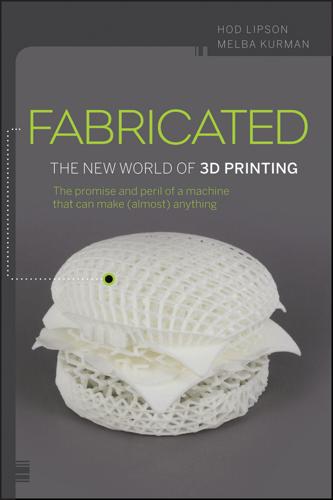
Fabricated: The New World of 3D Printing
by
Hod Lipson
and
Melba Kurman
Published 20 Nov 2012
A friend of mine relishes MakerBot’s ability to transform a relatively dry additive manufacturing machine into a sociable, creative playful endeavor. “When you think about MakerBot, you just feel like for some reason, you want to hug them,” is how he explained it. MakerBot’s loyal and passionate customers mingle on MakerBot’s website, thingiverse.com, where discussions reflect the company’s playful DIY culture. Like lifestyle magazines that offer readers recipes geared for specific holidays, MakerBot’s blog offers printing projects and tips to help its readers celebrate Memorial Day, Christmas, and the Fourth of July. MakerBot observes special holidays, for example, “Geek Pride Day.” To celebrate Geek Pride Day properly, users can download design files to print their own special towel hooks, a figure of Han Solo trapped in Carbonite, a pair of black hipster glasses, or Geek key chain.
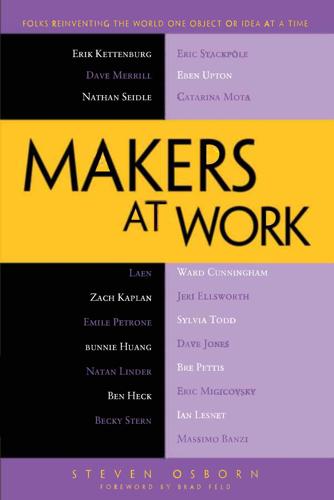
Makers at Work: Folks Reinventing the World One Object or Idea at a Time
by
Steven Osborn
Published 17 Sep 2013
The concept of the maker movement or maker culture is very simple at a low level. It is just people manipulating everyday things in their own environments. A maker’s motivation is often to improve the way they interact with the objects and the world around them. The nature and motivation of the projects aren’t any different from the DIY culture of yesteryear. The maker movement is just an acceleration of that culture, thanks to modern manufacturing technologies along with the availability and sharing of information via the Internet. The availability of this information has given anyone with a little curiosity a way of removing the mysteries and magic of the things around us through learning and exploration.
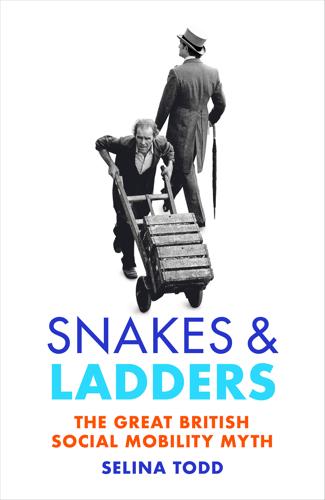
Snakes and Ladders: The Great British Social Mobility Myth
by
Selina Todd
Published 11 Feb 2021
Like the golden generation they were entering a very different world than that their parents had known. But many of the golden generation believed the state helped them to get on, or should do. The magpie generation no longer had this expectation. Whereas left-wing activists of the 1970s had focused on reforming or democratising the state, this generation created the DIY culture of the late 1970s and early 1980s, which stood apart from the state, relying on it only for a dole cheque in times of need. In this situation, friends were even more important. Darren Prior was part of a group who met in the merchant navy and recognised that the work their parents had done was disappearing.

Lonely Planet Kenya
by
Lonely Planet
Wildlife drives and transfers can be arranged with advance notice (and for an additional cost) for those without their own vehicle for reaching and exploring the park. Wundanyi The provincial capital of Wundanyi is set high in the Taita Hills and is a refreshingly untouristy detour in the heart of the Taita homeland. Wildlife is scarce, but come here for a low-key, DIY cultural experience with some lovely landscapes thrown in. Numerous trails criss-cross the cultivated terraced slopes around town, leading to dramatic gorges, waterfalls, cliffs and jagged outcrops. It’s easy to find someone to act as a guide, but stout walking boots and a head for heights are essential.

The Rough Guide to Australia (Travel Guide eBook)
by
Rough Guides
Published 14 Oct 2023
The entire area is surrounded by bush, with the huge spaces of the Ku-ring-gai Chase National Park in the south and the Brisbane Waters National Park in the north. Beyond Broken Bay, the Central Coast between Gosford and Newcastle is an ideal spot for a bit of fishing, sailing and lazing around. Newcastle is escaping its industrial-city tag: an attractive beach metropolis, with a surfing, student, café, music and DIY culture all part of the mix. Immediately beyond are the wineries of the Hunter Valley. To the west, you escape suburbia to emerge at the foot of the beautiful World Heritage-listed Blue Mountains, while the scenic Hawkesbury–Nepean river valley cradles historic rural towns such as Windsor. As you head south, the Royal National Park is an hour’s drive away, while on the coast beyond you can explore a string of small, laidback towns – Waterfall, Stanwell Park, Wombarra – with beautiful, unspoilt beaches.